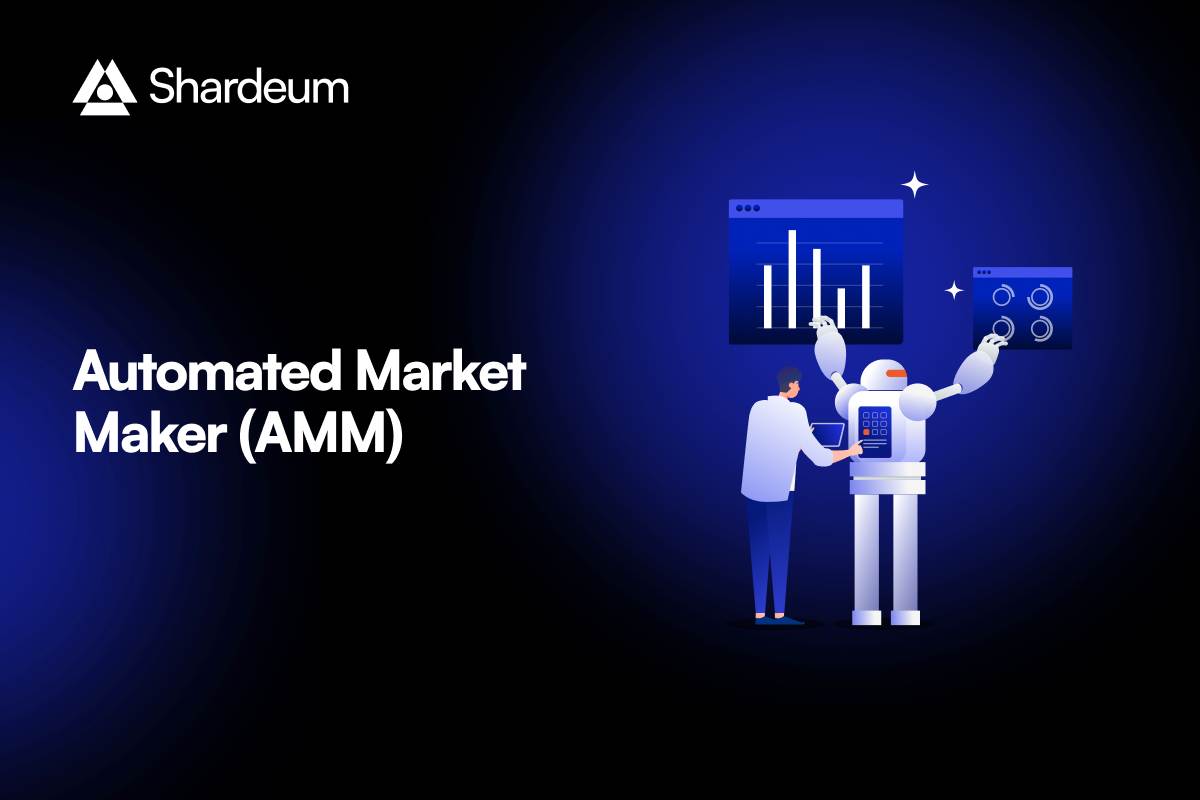Automated Market Makers (AMMs) Explained

- Understanding the Basics of Automated Market Makers
- How AMMs are Revolutionizing Decentralized Finance
- The Role of Liquidity Pools in AMMs
- Comparing AMMs to Traditional Market Making
- The Benefits and Risks of Using Automated Market Makers
- Exploring the Future of AMMs in the Crypto Market
Understanding the Basics of Automated Market Makers
Automated Market Makers (AMMs) are a crucial component of decentralized finance (DeFi) platforms. These algorithms facilitate the exchange of assets without the need for traditional order books. Understanding the basics of AMMs is essential for anyone looking to participate in DeFi trading.
One of the key concepts behind AMMs is liquidity pools. These pools consist of pairs of tokens that users provide to enable trading. By adding funds to a liquidity pool, users earn fees based on the trading volume. This process helps ensure that there is always liquidity available for traders.
AMMs operate based on a mathematical formula that automatically adjusts the price of assets based on supply and demand. This formula allows traders to swap tokens at any time without needing a counterparty. As a result, AMMs provide a more efficient and decentralized way to trade assets compared to traditional exchanges.
One of the most popular AMM protocols is Uniswap, which has gained significant traction in the DeFi space. Uniswap uses an automated market-making algorithm to determine the price of assets in its liquidity pools. This algorithm ensures that the price of assets remains in equilibrium based on the ratio of tokens in the pool.
Overall, AMMs play a vital role in the DeFi ecosystem by providing a decentralized and efficient way to trade assets. By understanding how AMMs work and the role they play in liquidity provision, users can take full advantage of the benefits offered by these innovative protocols.
How AMMs are Revolutionizing Decentralized Finance
Automated Market Makers (AMMs) have been a game-changer in the world of Decentralized Finance (DeFi). These algorithms have revolutionized the way users can trade digital assets without the need for traditional intermediaries. By providing liquidity to decentralized exchanges, AMMs enable users to swap tokens directly with smart contracts, creating a more efficient and cost-effective trading environment.
One of the key features of AMMs is their ability to automatically set prices based on the ratio of assets in a liquidity pool. This eliminates the need for order books and centralized exchanges, making trading more accessible to a wider range of users. Additionally, AMMs use mathematical formulas to determine prices, ensuring transparency and reducing the risk of manipulation.
AMMs have also introduced the concept of impermanent loss, which occurs when the value of assets in a liquidity pool diverges from the value of those assets held in a user’s wallet. While impermanent loss can be a concern for liquidity providers, the overall benefits of AMMs in terms of efficiency and accessibility outweigh this potential drawback.
The Role of Liquidity Pools in AMMs
One crucial component of Automated Market Makers (AMMs) is the concept of liquidity pools. Liquidity pools are pools of tokens locked in a smart contract that enable trading on decentralized exchanges. These pools facilitate trading by providing liquidity for traders to swap between different tokens without the need for a traditional order book.
When a user wants to make a trade on an AMM, they interact with a liquidity pool rather than placing an order with a centralized exchange. This process is automated through algorithms that adjust token prices based on supply and demand. Liquidity providers deposit tokens into these pools and earn fees in return for providing liquidity to the market.
By utilizing liquidity pools, AMMs are able to offer continuous liquidity for a wide range of tokens, even those with low trading volumes. This helps to reduce slippage and improve the overall trading experience for users. Additionally, liquidity pools play a vital role in setting token prices based on the ratio of tokens in the pool, ensuring that prices are always in line with market conditions.
Comparing AMMs to Traditional Market Making
When comparing Automated Market Makers (AMMs) to traditional market making, it is essential to understand the key differences between the two approaches. Traditional market making involves human traders who set prices based on their analysis of supply and demand in the market. These traders provide liquidity by buying and selling assets to maintain a stable market.
On the other hand, AMMs are decentralized protocols that use smart contracts to automate the process of market making. Instead of relying on human traders, AMMs use algorithms to set prices based on predefined mathematical formulas. This allows for continuous trading and liquidity provision without the need for intermediaries.
One of the main advantages of AMMs over traditional market making is their ability to operate 24/7 without human intervention. This means that users can trade assets at any time without having to wait for market makers to be active. Additionally, AMMs typically have lower fees compared to traditional market makers, making them more cost-effective for traders.
However, there are also some drawbacks to using AMMs. One of the main concerns is the potential for impermanent loss, which occurs when the price of assets in the pool diverges from the external market price. This can result in a loss of funds for liquidity providers, especially in volatile markets.
In conclusion, while AMMs offer several advantages over traditional market making, they also come with their own set of risks. It is essential for traders to carefully consider these factors before deciding which approach to use for their trading activities.
The Benefits and Risks of Using Automated Market Makers
Automated Market Makers (AMMs) offer various benefits and risks to users in the decentralized finance (DeFi) space. Understanding these advantages and potential drawbacks is crucial for anyone looking to participate in automated trading platforms.
One of the key benefits of using AMMs is the ability to provide liquidity to decentralized exchanges without the need for a centralized intermediary. This allows users to earn passive income through trading fees by simply depositing their assets into liquidity pools. Additionally, AMMs offer continuous liquidity, ensuring that trades can be executed at any time without relying on external market makers.
On the other hand, there are risks associated with using AMMs that users should be aware of. Impermanent loss is a common concern, where the value of assets in a liquidity pool fluctuates compared to holding the assets individually. This can result in a loss of funds if the market moves unfavorably. Additionally, AMMs are susceptible to price manipulation and other vulnerabilities, which can expose users to potential security risks.
Despite these risks, many users find the benefits of AMMs to outweigh the potential drawbacks. By understanding how automated market makers work and implementing risk management strategies, users can take advantage of the opportunities presented by decentralized trading platforms while minimizing their exposure to potential risks.
Exploring the Future of AMMs in the Crypto Market
As we look ahead to the future of Automated Market Makers (AMMs) in the cryptocurrency market, it is clear that these decentralized exchanges are here to stay. The innovative technology behind AMMs has revolutionized the way traders can swap tokens without the need for traditional order books. This has opened up a world of possibilities for liquidity providers and traders alike.
One of the key advantages of AMMs is their ability to provide continuous liquidity, allowing for seamless trading around the clock. This has made them particularly popular in the decentralized finance (DeFi) space, where users can access a wide range of tokens and trading pairs with ease. As the crypto market continues to evolve, AMMs are likely to play an increasingly important role in facilitating efficient and secure trading.
Another exciting development in the world of AMMs is the rise of new protocols and innovations that aim to address some of the limitations of existing platforms. For example, some projects are exploring ways to reduce impermanent loss for liquidity providers, while others are focusing on improving capital efficiency. These advancements are helping to make AMMs even more attractive to a wider range of users.
Overall, the future of AMMs in the crypto market looks bright. With their ability to provide decentralized and efficient trading solutions, AMMs are well-positioned to continue growing in popularity and adoption. As the technology behind AMMs continues to evolve, we can expect to see even more exciting developments that will further enhance the user experience and expand the capabilities of these innovative platforms.




